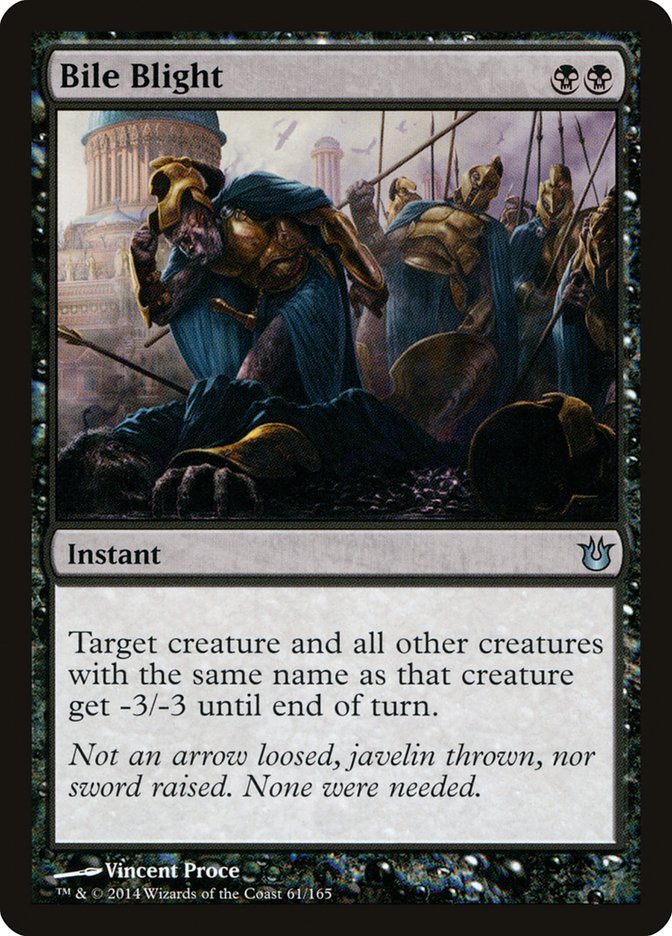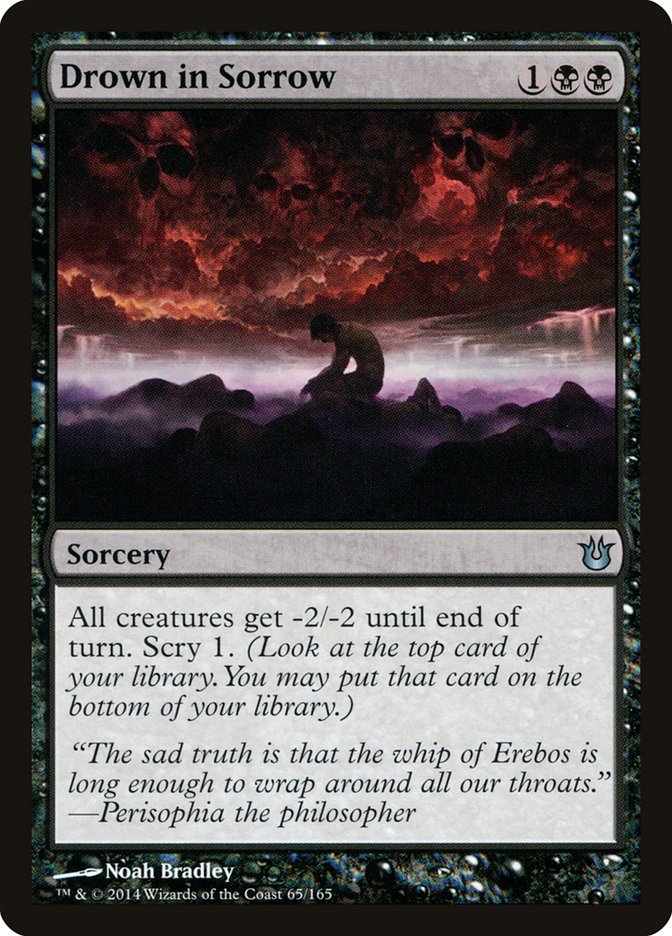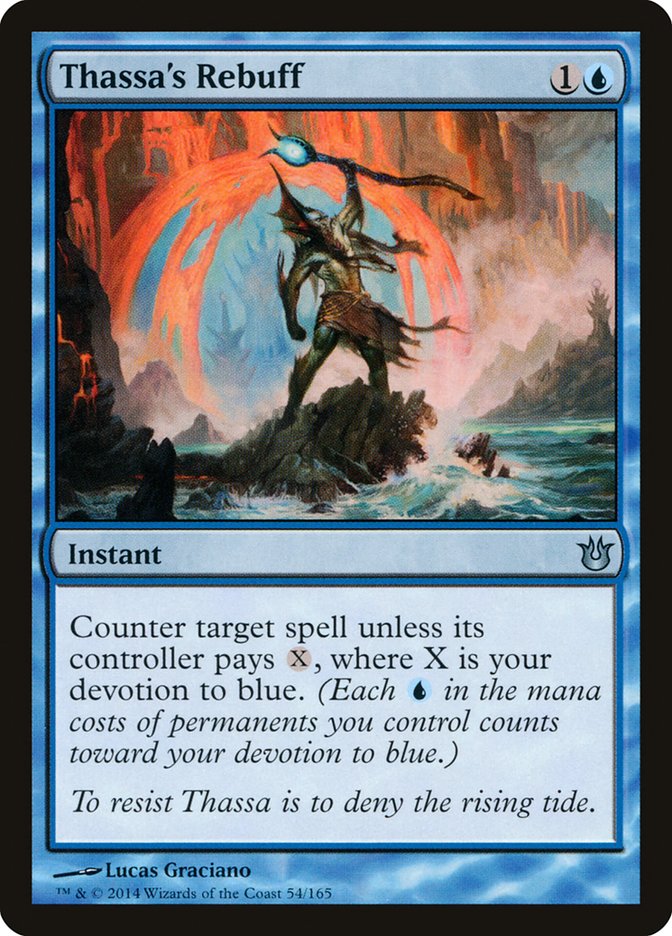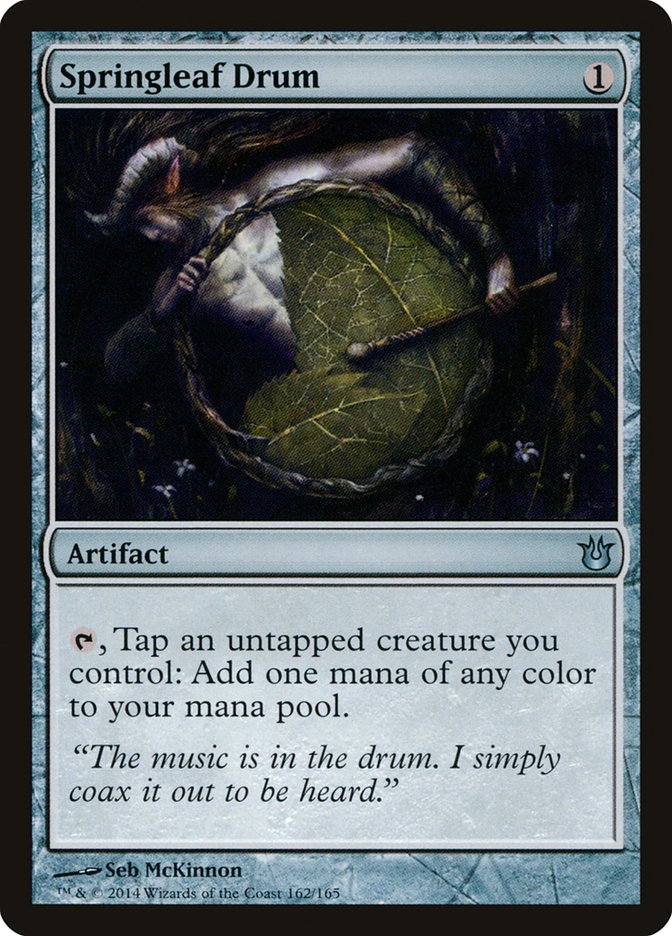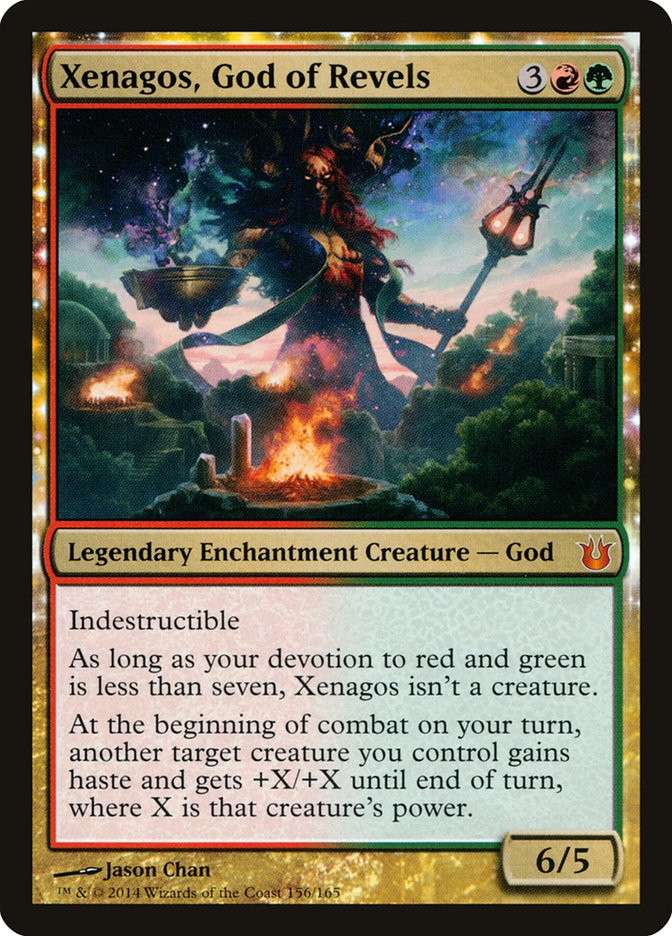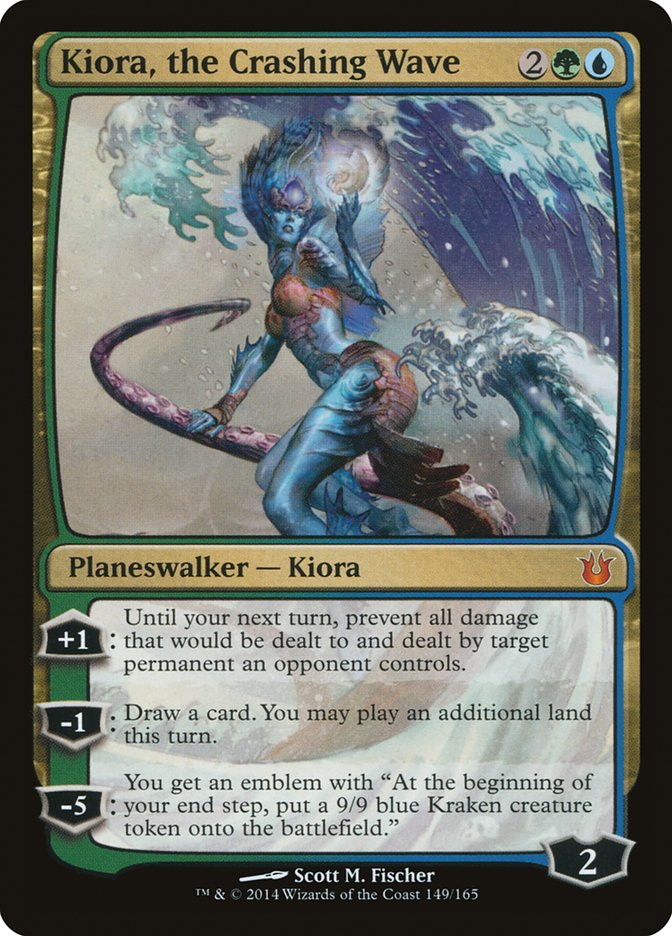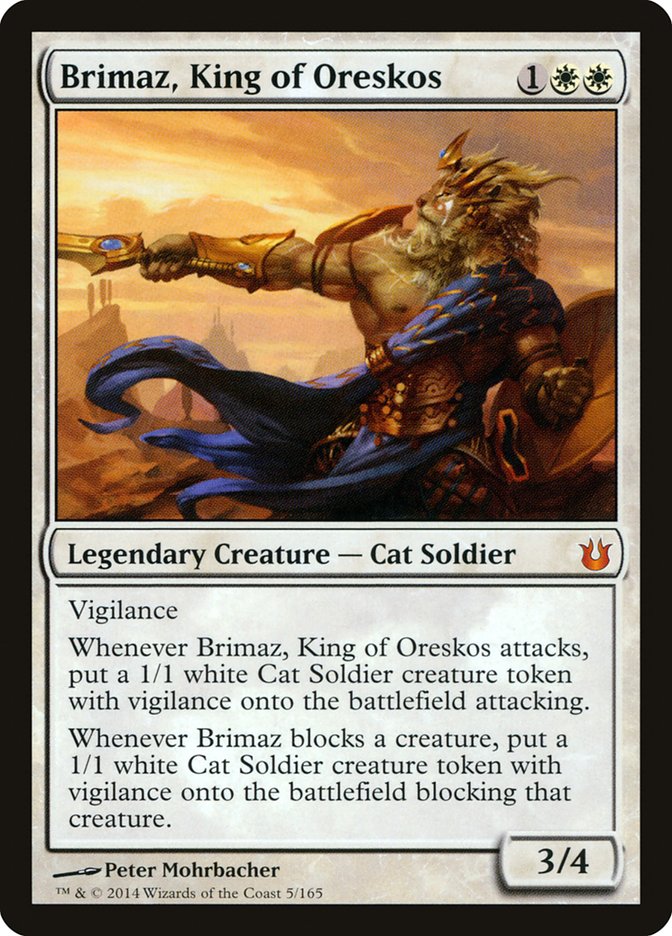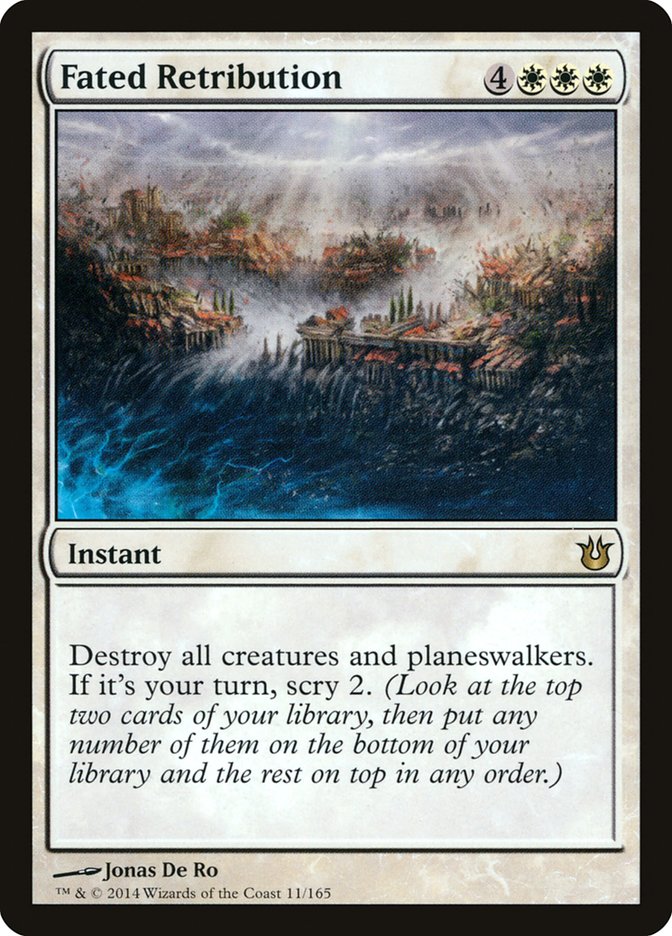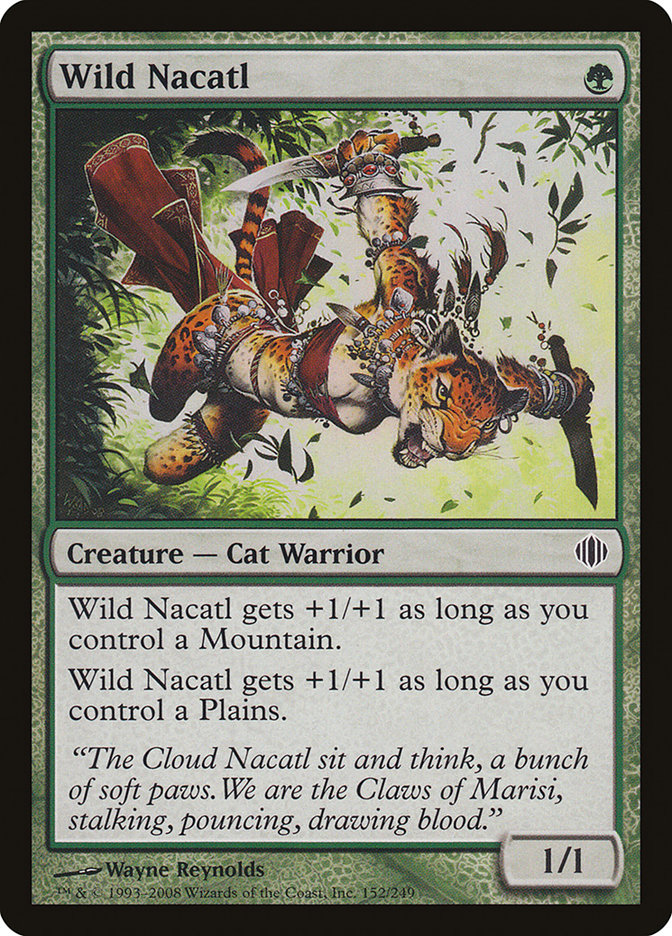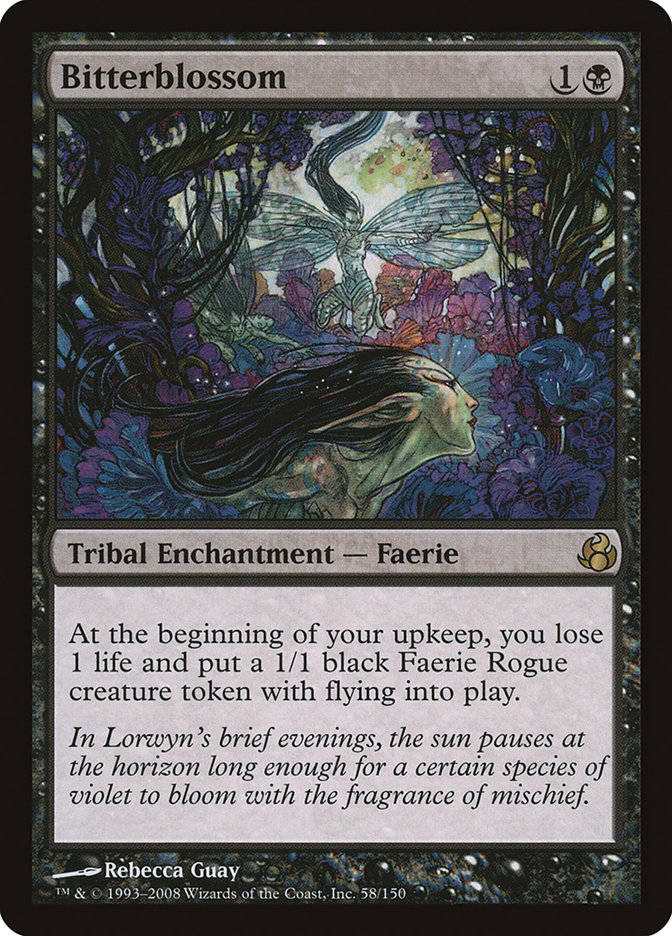Last week I ended my article with the promise of an awesome theory piece, but I’m not quite finished with it so you will have to wait another week for it. What I have instead is a ton of information to share about the new Standard format featuring Born of the Gods! After playing in a few Versus videos with Brad Nelson (which you can find here, here, and here), I have a new respect for a couple of cards in the new set, and I think they will eventually shape how we build our decks.
With the StarCityGames.com Open Series coming to Nashville, Tennessee this weekend, Standard is everyone’s main interest at the moment. Will Born of the Gods actually shake things up or will the same old decks be on camera every round? Well, I can tell you one thing—Born of the Gods actually has a very high number of playable cards in Standard, though few of them will actually spawn new archetypes.
That means that some old decks got a few upgrades. Let’s start with the devotion decks.
Mono-Black Devotion
The removal for Mono-Black Devotion got a lot stronger, but there isn’t a whole lot else going for it. If you can easily remove the Mono-Black player’s threats from play, it will be very difficult for them to win. Pack Rat got a lot worse with the printing of Bile Blight, though decks without access to sweeper effects will still have trouble beating it. The easiest way to combat Pack Rat without mass removal is to overwhelm them with a lot of early pressure since it takes a few turns for Pack Rat to really come online. If you let things get out of hand . . . well, you know the drill.
Drown in Sorrow also gives Mono-Black Devotion a solid sweeper against hyperaggressive decks, which is something it didn’t have before. Shrivel was my go-to spell when I needed to kill some X/1s, but I still got pummeled by Precinct Captain on occasion. If you’re planning on playing an aggressive deck in Nashville, make sure you build it with these two cards in mind. They will be out in large numbers, though Drown in Sorrow will most likely be a sideboard card.
Creatures (16)
Lands (26)
Spells (18)

Mono-Blue Devotion
A slight upgrade of a counterspell, but still one that doesn’t actually do what you need it to do: stop Supreme Verdict. Without an actual answer to Supreme Verdict or even an opposing Jace, Architect of Thought, I don’t know if Mono-Blue Devotion is going to continue to dominate the format. Obviously the deck is powerful, but a lot of archetypes got major upgrades while Mono-Blue Devotion got basically nothing. In fact, I don’t even know if this card is good, but it has Thassa’s name on it so it has to be decent, right?
With that said, Master of Waves is still a card. You need a solid way to fight it because it will take over the game upon arrival. If you think you can just race it with Fanatic of Mogis and Stormbreath Dragon, then by all means go for it.
Creatures (28)
- 3 Judge's Familiar
- 4 Frostburn Weird
- 4 Cloudfin Raptor
- 4 Nightveil Specter
- 1 Galerider Sliver
- 4 Tidebinder Mage
- 4 Thassa, God of the Sea
- 4 Master of Waves
Planeswalkers (2)
Lands (25)
Spells (5)

R/x Devotion
With Born of the Gods, this archetype got a bit stronger on a few fronts. It obviously depends on what you want your splash to be, but I think that red devotion should play Xenagos, God of Revels. The new incarnation of Xenagos is my pick for best card in the set, and I don’t think it’s actually close. Regardless of what shell you are building around, if you have enough threats to make his ability relevant, you should be in good shape. And if you can actually turn him on, that’s just icing on the cake.
The problem with Xenagos, like all of the new God cards, is that he’s expensive and a bit harder to turn into a creature than the original monocolored God cards. However, the payoff is huge, making cards like Stormbreath Dragon and Mistcutter Hydra into gigantic monsters that are very difficult for many decks to deal with.
Springleaf Drum is an interesting card that I haven’t had too much experience with just yet, but I love it in theory. Alongside Burning-Tree Emissary, you can start casting tough threats like Domri Rade on the second turn. Additionally, it is another card that helps ramp into your more important threats and also gives you additional green sources of mana without actually have to play Forests. With Stomping Ground, Temple of Abandon, Burning-Tree Emissary, and Springleaf Drum, you’ll find your draws to be much smoother.
Springleaf Drum has been talked about at length with Pain Seer so I’m not going to go into it too much, but I will say that Springleaf Drum has already proven to be very strong in a lot of our initial builds of Born of the Gods Standard decks. It has a lot of utility for such a small investment and gives these "go big" devotion decks even more explosive starts than they used to have. Can you imagine starting with Drum into Burning-Tree into Hammer of Purphoros on turn 2? In a format where everyone is trying to nut draw each other, a bit more explosiveness and consistency is definitely welcome.
Creatures (27)
- 4 Ash Zealot
- 4 Frostburn Weird
- 4 Burning-Tree Emissary
- 4 Boros Reckoner
- 2 Purphoros, God of the Forge
- 3 Stormbreath Dragon
- 4 Fanatic of Mogis
- 2 Xenagos, God of Revels
Planeswalkers (5)
Lands (24)
Spells (4)

G/x Devotion
Whether you want to splash red or blue is up to you, but I think that Kiora, the Crashing Wave allows for a lot of your draws to be much more explosive. The best part about Kiora is how quickly it can accelerate you into Garruk, Caller of Beasts or potentially even Sylvan Primordial. I’m not proud of it, but after playing with Sylvan Primordial in the deck for just a few games, I’m already sold. Kiora can also play some very strong defense if your opponent plays a tough threat like Stormbreath Dragon.
Courser of Kruphix is another creature that features double green in the casting cost, which is a great start, and two very strong abilities come with it. Courser helps you dig for Nykthos, Shrine to Nyx, which is the actual heart of the deck. Without Nykthos, the deck doesn’t function all that well, so having a creature that can help find it is a welcome addition. You also gain small amounts of life each time you play a land, which can add up against an aggressive deck. The fact that Courser of Kruphix is also a 2/4 means that it’ll be able to block most early threats as well.
While Courser of Kruphix doesn’t actually look all that impressive, it provides some needed utility and can even help you fight through a glut of lands on top of your deck. If you don’t draw Garruk, it can be very easy for this deck to flood out, so it’s important to have cards in your deck that can help prevent this from happening.
Creatures (25)
- 4 Burning-Tree Emissary
- 3 Sylvan Primordial
- 4 Elvish Mystic
- 3 Polukranos, World Eater
- 4 Sylvan Caryatid
- 2 Arbor Colossus
- 3 Voyaging Satyr
- 2 Courser of Kruphix
Planeswalkers (8)
Lands (24)
Spells (3)
Sideboard

While Nykthos is a very powerful Magic card, there are plenty of other archetypes in Standard at the moment, and most of them got a little bit better with the new set. Next let’s explore a couple of my favorite archetypes and a few cards that make them better.
W/x Aggro
While Brimaz is likely the only card that will make the cut out of Born of the Gods for white aggressive strategies, it’s going to make a huge impact on the format. For three mana, you get a powerhouse creature that dodges most of the popular removal in the format. It even has vigilance so you can attack and block, triggering his ability to create a token each turn! With Brave the Elements around to protect him, Brimaz is sure to win games all by himself. And if you pair him with Ajani, Caller of the Pride or Spear of Heliod, things can get out of hand really fast.
Brimaz might also make some waves in midrange strategies simply due to the fact that you can pair it alongside Anger of the Gods for some major damage against anyone who tries to flood the board with creatures. These decks will likely be more focused on controlling the board with removal spells, but that just makes Brimaz even more ridiculous since there will be no creatures left in play to block it!
Creatures (24)
- 4 Dryad Militant
- 4 Precinct Captain
- 4 Voice of Resurgence
- 4 Banisher Priest
- 4 Soldier of the Pantheon
- 4 Brimaz, King of Oreskos
Planeswalkers (3)
Lands (23)
Spells (10)

The versions of this deck that play more one-drop creatures like Boros Elite are obviously more aggressive, which might be a good thing, but I actually like the small green splash for Voice of Resurgence and Selesnya Charm. Voice is particularly powerful against almost every single deck in the format, though it really shines against removal-heavy strategies.
The Mutavaults might be a bit ambitious since you have so many double-colored spells in the deck, so cutting down to two might be the correct play. Missing your creatures on curve can be devastating, but giving yourself some breathing room against opposing Supreme Verdicts and Jace, Architect of Thoughts is a delight. The singleton Forest could easily be another Selesnya Guildgate, or you could just gamble and play another Plains. But I feel like eleven sources of green should be enough for the eight maindeck cards and whatever sideboard cards you want to play.
U/W Control
Again, not a lot of cards will make the cut in this archetype, but that’s mostly due to the fact that there are so many powerful spells in the deck already. Fated Retribution gives U/W Control a spell that is nearly impossible to play around since it combos quite nicely with Sphinx’s Revelation when you have access to seven mana. If they don’t try to pressure you, then you can just wait another turn, cast your Revelation, and play the same game next turn.
U/W Control is notoriously light on ways to interact with opposing planeswalkers, and Fated Retribution gives you a great tool for beating annoyances like Xenagos, the Reveler and Domri Rade. While it could be a bit slow at times, I wouldn’t be surprised to see a Bant shell featuring Kiora, the Crashing Wave helping you ramp into your Retribution or just stalling the board so that your opponent continues to overextend into your many Wrath of God effects.
While it will probably fit better in the version that plays Elixir of Immortality, I could definitely see playing a few copies in basically any U/W Control deck. Sometimes Elspeth isn’t enough to get back into the game, and Retribution is just what the doctor ordered.
Creatures (1)
Planeswalkers (6)
Lands (27)
Spells (26)

This list is based off of Tomoharu Saito’s version U/W Control that has been doing very well recently. I don’t actually know how to build the version utilizing Elixir of Immortality, but I’m sure that Andrew Cuneo will build the most boring no-win-condition version of U/W Control that anyone has ever seen (but I hope not).
On The Modern Banned List
I can’t go too deep in the tank about the Modern banned list since I’m under strict orders to keep things under wraps. However, I do want to comment on the most recent changes because I’ve been an advocate of Modern for quite some time. To me, the format has felt pretty stale over the last few months (or more) simply because they keep banning cards that don’t really feel like they should be getting banned.
For example, the banning of Bloodbraid Elf just felt sloppy. It wasn’t a combo card. It wasn’t even the best card in the Jund deck that dominated the format. In fact, I would say it was third or possibly even fourth best out of all the major offenders, but one card was right on the edge for me:
Yes, I know they banned it this time, and I’m happy they did. Deathrite Shaman was one of the hardest cards for my Goryo’s Vengeance and Necrotic Ooze decks to fight, especially when they were stripping my hand of relevant spells via Thoughtseize and Inquisition of Kozilek.
But that was just the tip of the iceberg. I don’t think that "fair" cards should ever get the axe. I’ve talked about this a reasonable amount in the past, but my argument remains that if there is one fair deck that is just too good then you should just unban some of the unfair stuff to create a little space. Various fringe decks can exist when they have something to prey on, but when everyone is just playing creatures and removal spells, the one with the most efficient threats and removal is going to continuously dominate. Jund did exactly that.
But why exactly did Jund dominate? There were some combo decks, some control decks, and some . . . wait a second, were there actually any aggro decks in the format?
The original banning of Wild Nacatl was to prevent all green decks from becoming variations of Wild Nacatl aggro decks. However, they failed to realize that banning Wild Nacatl would put aggressive decks too far behind the rest of the decks in the format to actually compete. This created a stale metagame that just revolved around control, combo, and the midrange deck. Without an aggro deck to attack from another angle, Deathrite Shaman and friends were allowed to completely take everything over. But do you see the awkwardness in banning Wild Nacatl for stifling creativity and then printing Deathrite Shaman?
At the very least, I think that the biggest mistake they’ve made so far was banning Deathrite Shaman at the same time they’re unbanning Wild Nacatl. With both creatures available in the format, they would be providing green mages with a plethora of potential archetypes. It could only help spawn diversity within the color, giving birth to a rich environment that breeds competition between archetypes. Instead, they’re taking away the one card that gave midrange decks a fighting change and replacing it with one of the most notorious aggressive cards in history.
Last and surely least:
Why in the hell is this card so expensive right now? I get that people love playing with Faeries and other people are trying to capitalize on this turn of events. However, I don’t think that Bitterblossom will be very good in Modern—or at least I don’t think Faeries will be a good archetype. Abrupt Decay is a very commonly played card that can invalidate the base strategy. Also, Faeries never really had to deal with fully powered Wild Nacatl aggressive decks while it was in Standard.
I’m sure Ari Lax and a million others are wringing their hands with excitement because access to Bitterblossom could revive the aggro-control archetype. I don’t think that is a bad thing since Faeries was a very skill-intensive deck that punished you dearly for the slightest mistake. I’m all for skill-intensive games of Magic, and Faeries helps push that idea.
I do think that Bitterblossom will push W/B Tokens into a real contender in Modern. Alongside anthem effects like Intangible Virtue, it will be absurdly difficult for control and midrange strategies to beat. But aggressive decks will just laugh and cast Tribal Flames, and combo decks will just make a million copies of some creature or another.
Overall, I’m happy with the direction they’re taking Modern. I wouldn’t be afraid to unban more cards in the near future as format develops. Adding too many new cards to the pool could be bad for business, but one or two at a time might be just the right thing to spice it up and make people actually interested in the format. After all, that’s the goal.
Well, that’s all for me this week. I hope that the above decks are a solid starting point for your testing for the Standard Open in Nashville. I’m not quite sure what I’m going to play since Born of the Gods definitely had a little boost for everyone. I haven’t really played a true Nykthos deck yet, so that might be something to cross off the list. It’s been a while since I had fun casting gigantic green monsters, and Sylvan Primordial seems legit. If you see me in Nashville, don’t be afraid to come say hello! I’d love to see what people have been cooking up with Born of the Gods.

